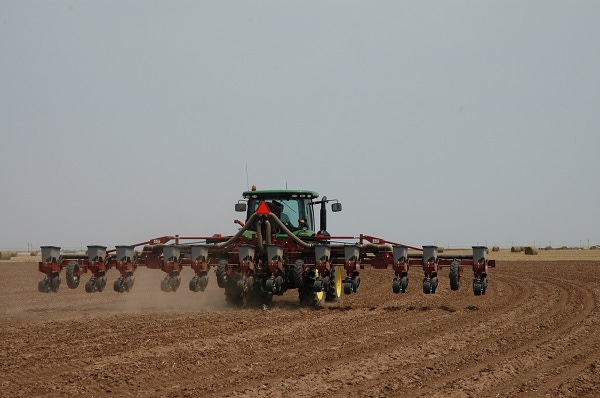
About every three days a child on a U.S. farm dies from an agriculture-related incident. Every day some 38 children are injured on a U.S. farm.
Machinery is involved in 25 percent of youth fatalities on a farm. Motor vehicles, including ATVs, account for 17 percent of youth farm fatalities and 16 percent result from drowning. Vehicles and machinery account for 73 percent of the deaths of working youth on farms.
Those grim statistics come from the National Children’s Center for Rural and Agricultural Health and Safety (NCCRAHS), a program of the National Farm Medicine Center and the Marshfield Clinic Research Foundation in Marshfield, Wis.
Deborah Reed, a professor in the College of Nursing at the University of Kentucky, consults on farm health issues, including child safety and aging. She comes from a farm family and relies on that experience, in addition to her professional expertise, to help educate rural families on safety issues.
For the latest on southwest agriculture, please check out Southwest Farm Press Daily and receive the latest news right to your inbox.
“We’re making progress,” Reed says. Twenty years ago the rate of youth death on U.S. farms was one per day. “One child is one too many,” she says. Some of the improving statistics result from the smaller number of farms and thus fewer children on farms. Also, fewer farm children are doing farm work. She says education and outreach efforts also make a difference.
It’s a complex issue that includes a tradition of teaching a strong work ethic, a child’s desire to please parents and the lack of available day care in rural communities, especially during peak work periods on the farm—planting and harvest, for instance.
Tractors are often involved
Reed notes that 80 percent of youth farm injuries occur to children who are not working on the farm but “are in the vicinity.” Accidents include being run over by tractors or other equipment, and falling off tractors driven by someone else. Falls account for many injuries and drowning also takes a toll with farm ponds, creeks and livestock lagoons cited as potential hazards. An NCCRAHS fact sheet shows a promising change. “From 1998 to 2012, the rate of childhood agricultural injuries per 1,000 farms (includes youth who live on, visit and are hired to work on farms) declined by 61 percent and the rate of injuries per 1,000 household youth (those living on farms) declined by 57 percent.”
However, injuries among children under 10 are increasing. Also, the gap between males having higher injury rates than females has decreased. The leading causes of non-fatal injuries include falls, animals and vehicles.
Overall, agriculture injuries account for a much higher percentage of occupational fatalities for workers under16 years than all non-agriculture industries for that same age group, according to NCCRAHS.
Public perception, Reed says, often indicates that children who are injured or die on farms are doing work they are not old enough to perform. In some cases that might be true, but most fatalities occur to “bystanders in the workplace.”
Four-wheelers (ATVs) also result in injuries and fatalities. “They are used for work on the farm but also for recreation,” Reed says.
A child’s death in a farm-related accident is an unspeakable, unimaginable tragedy. “And it is preventable,” Reed says. She says “age-appropriate” may not always be a correct measure of which chores a youngster is ready to take on. “Developmentally appropriate,” she says, makes more sense. A less mature 14-year old may not be as capable of operating a machine as someone a year or two younger. Parents must make judgment calls on when a child is ready to take on more responsibility.
“Arms-reach supervision,” she says, is also a good practice and “a big step toward improving safety for youth who do not have the experience and judgment of an adult.”
Legislation to eliminate child on-farm injuries is not the answer, Reed says, and would likely not pass many legislative bodies. That was tried at a national level several years ago and was met with stiff objections. Enforcement on the nation’s 2 million farms also would prove infeasible.
For youth working on the farm, teen-age boys, 14 to 15 years old, are most likely to be injured, especially with big machinery. Girls that age are less likely to be injured.
Safety classes are still important and “kids take those messages home to their parents.”
Childcare a big issue
Young people also may provide a much needed service. Childcare remains a daunting issue, especially during busy times. “The extended farm family is not as common as it used to be,” Reed says. “Grandmother may not be around to look after the kids during harvest.” And that’s a vulnerable time as busy adults may take their eyes off toddlers for just a second to handle a chore. “When children are in a work area they have to have direct supervision.”
Cooperation between agencies, organizations and families may offer some help, Reed says. “4-H programs train and certify kids to be baby sitters. Families can get together and hire some of those 4-H kids to provide day care at a nearby church or community center during peak work times.
A significant safety factor lies with the child’s desire to please. They grow up on the farm, learn early on the value of work and want to be a part of the operation. That’s where parents have to step in and determine what task is “developmentally appropriate,” Reed says. “Remember supervision within arm’s reach. But we have to be grounded in reality.
“We are coming up with more education opportunities,” Reed says. “But we know that education and regulation are not enough. We have to change the tradition.”
Reed says farm families should evaluate the appropriate tasks for their children. Tradition should be put on a back burner. “It’s a lot easier to bury a tradition than it is to bury a child,” she says.
About the Author(s)
You May Also Like






